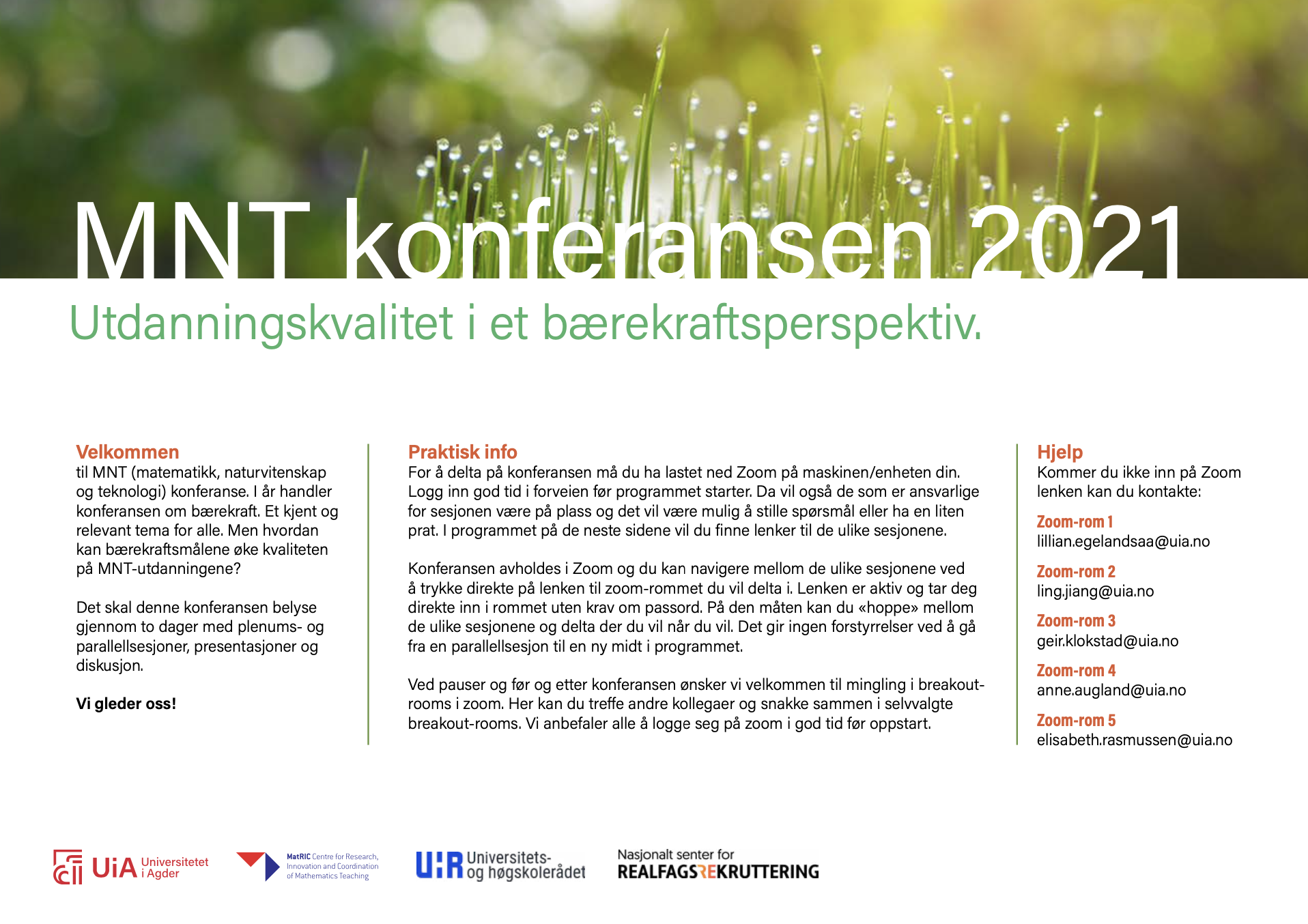Faktorar som påverkar kvaliteten på digital undervisning
DOI:
https://doi.org/10.5324/njsteme.v5i1.3944Abstract
Digitalisering av undervisningssektoren har fått mykje oppmerksemd dei siste månadane etter at samfunnet blei stengt. På grunn av smittevernreglar som avgrensar mogelegheita til fysisk undervisning, må utdanningsinstitusjonane tilpasse undervisninga til romkapasiteten, talet på studentar og ressursbruk til lærarane. Det medfører utfordringar for både studentar, lærarar og administrasjonen.
Dette konferansebidraget skal presentere resultat (erfaringar og refleksjonar) sett gjennom fire perspektiv: pedagogisk, sosial, økonomisk og økologisk. Kva slags digital undervisningsform trivst studentane best med? Kva gir størst læringsutbytte? Korleis blir det sosiale framheva gjennom undervisninga? Er studentane motiverte ved å sjå på ein skjerm? Kor mykje kostar utstyr som trengst til å førebu og gjennomføre digital undervisning? Kva er kostnaden på miljøet for å legge til rette for digital undervisning?
Studien presenterer ei samling av desse fire perspektiv og drøfter om å drive digitale undervisningsformer. Både med tanke på den økonomiske kostnaden til institusjonane og kvar student, med den pedagogiske, sosiale og økologiske kostanden. Det er ein samla vurdering av pengar, tid, ny kunnskap og energi som kan gi eit fullstendig bilete av kor mykje det eigentleg kostar med digital undervisning. Kan vi forbetre undervisningskvalitet med avgrensande resursar?
Nedladdningar
##submission.downloads##
Publicerad
Nummer
Sektion
Licens
Copyright (c) 2021 Marcin Fojcik, Martyna Katarzyna Fojcik

Det här verket är licensierat under en Creative Commons Erkännande 4.0 Internationell-licens.
The Nordic Journal of STEM Education licenses all content of the journal under a Creative Commons Attribution (CC-BY) licence. This means, among other things, that anyone is free to copy and distribute the content, as long as they give proper credit to the author(s) and the journal. For further information, see Creative Commons website for human readable or lawyer readable versions.
Authors who publish with this journal agree to the following terms:
1. Authors retain copyright and grant the journal right of first publication with the work simultaneously licensed under a Creative Commons Attribution License that allows others to share the work with an acknowledgement of the work's authorship and initial publication in this journal.
2. Authors are able to enter into separate, additional contractual arrangements for the non-exclusive distribution of the journal's published version of the work (e.g., post it to an institutional repository or publish it in a book), with an acknowledgement of its initial publication in this journal.
3. Authors are permitted and encouraged to post their work online (e.g., in institutional repositories or on their website) prior to and during the submission process, as it can lead to productive exchanges, as well as earlier and greater citation of published work (See The Effect of Open Access

